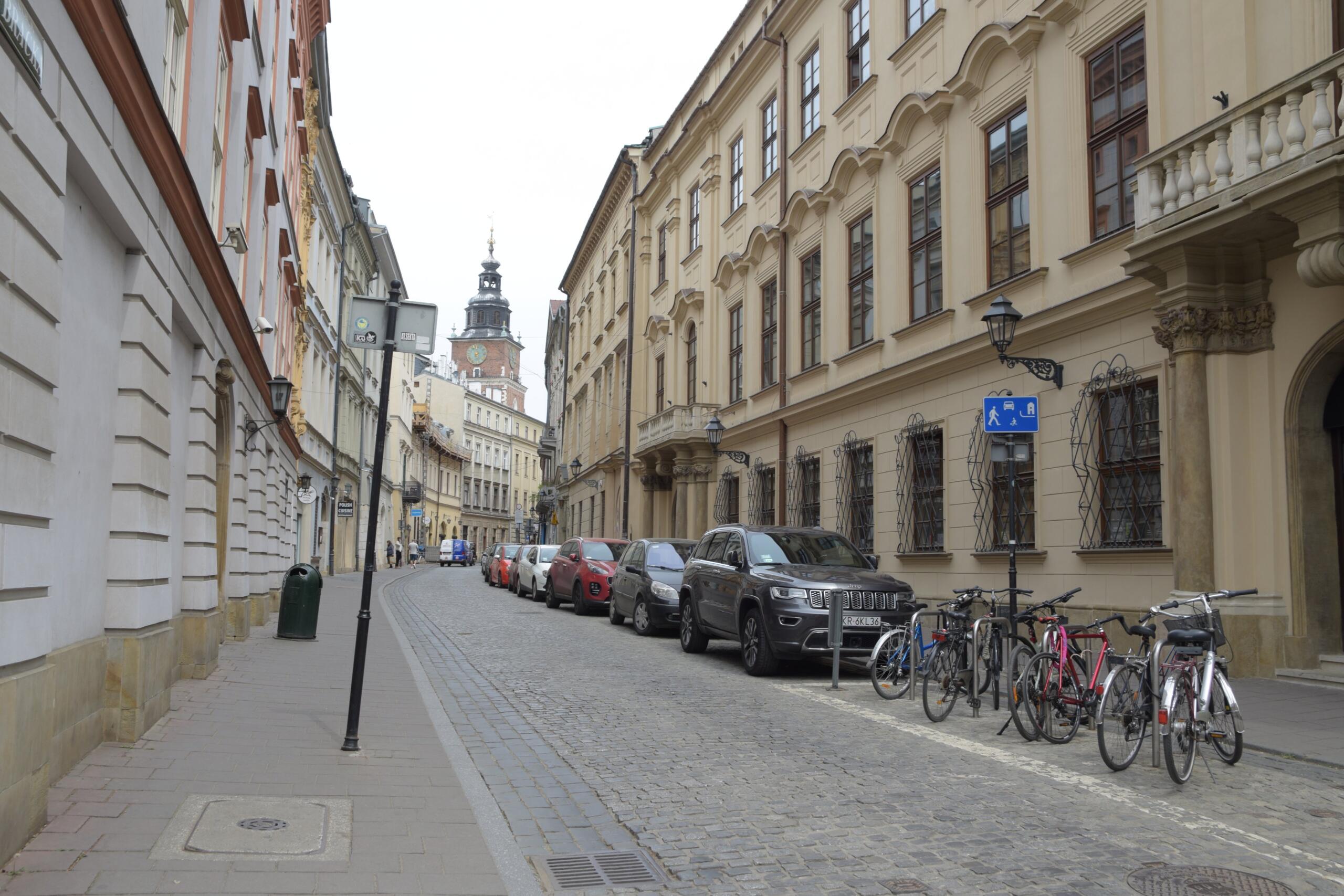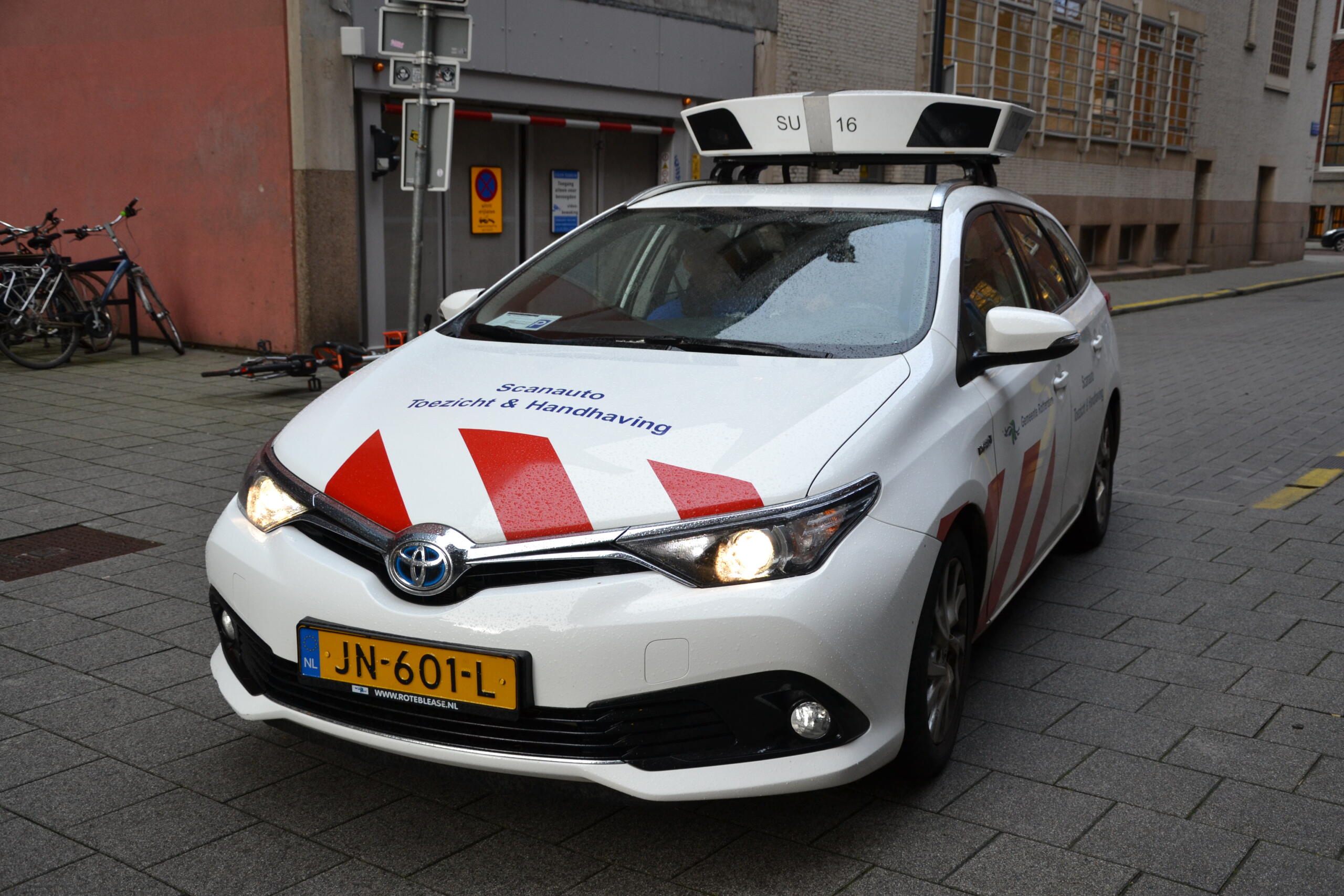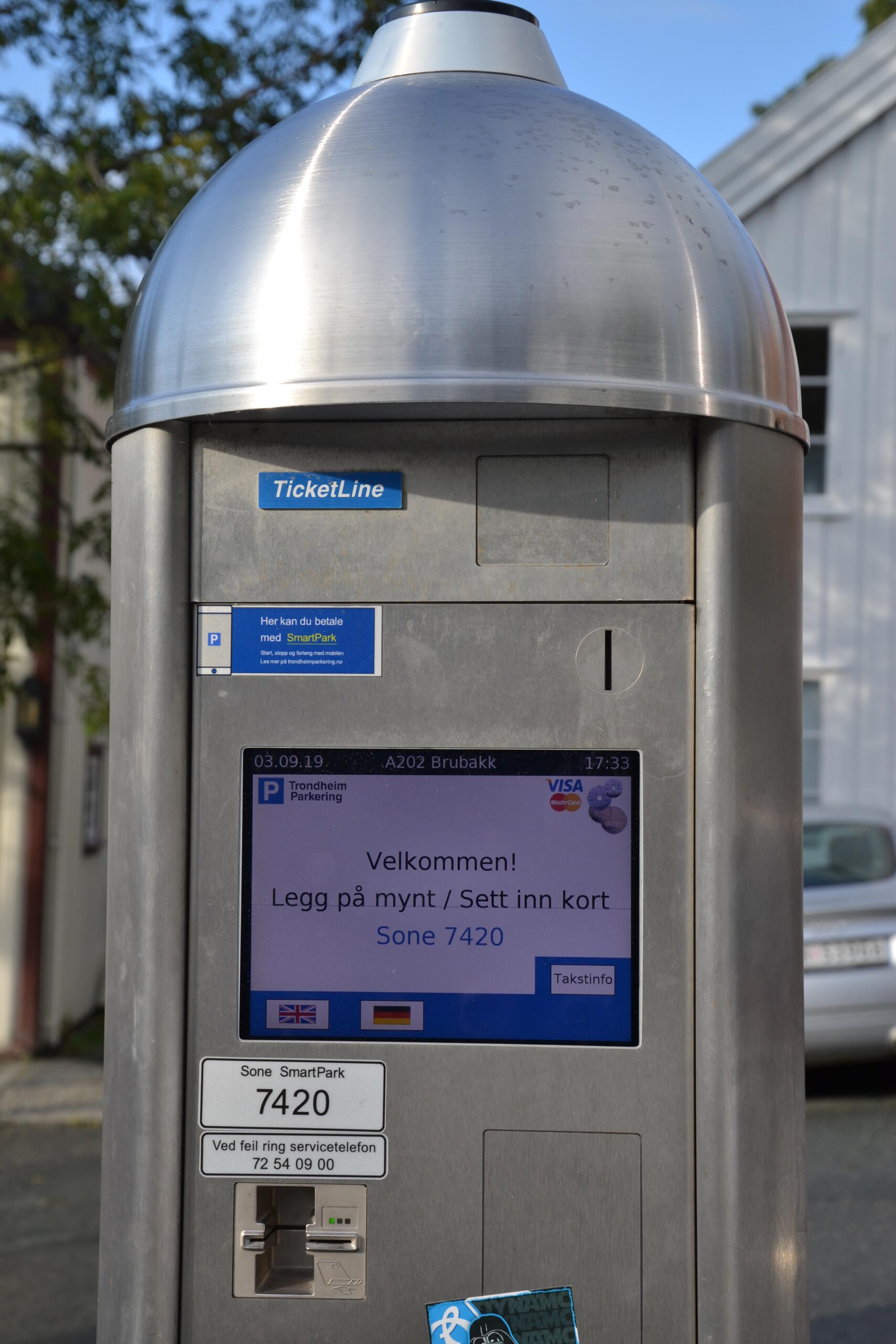A parking transition
Cities must navigate the complexity of parking policy, as it is an often-heated debate between opposing positions.
On one side, many motorists have the inherent feeling that ‘left-wing liberals are taking away their parking space’. On the other, policymakers and active mobility activists see parked cars as a ‘wall of metal that encloses most streets’. As always, the reality lies in between.
The solution could be rather simple: if inner-city parking space is limited, fewer cars can access the area. Does this plain assumption always apply and how can cities achieve this transition without restraining the mobility of citizens? What is the current state of play concerning (integrated) parking management?
The EU-funded Park4SUMP project and several POLIS Network members provide some smart answers.
Car-dependent cities – counteracting an 80-year-long love affair

An organised street in Krakow (PL) after on-street parking management was restructured. Credit: City of Krakow
Most European cities that were rebuilt in the post-war period focused on car-centric transport planning – a significant decision that still bears consequences. Car-oriented policies, lack of investment in public transport and lenient parking policies incentivised car use and increased parking spaces. Taking a quick look at some large cities in Europe, one can clearly see that parking has a significant impact on the use of public space, as well as pollution and traffic congestion.
Berlin serves as a great example of the significant impact that cars exert on the urban fabric. All privately owned parked cars in Berlin are taking up an area of 17 square kilometres, or more than 1,500 football fields, which amounts to 13% of the entire street space of the German capital.
When parking space is distributed unevenly, search traffic is increasing significantly. For example, inhabitants of Frankfurt search 41 hours per year for a parking spot, while Londoners spend an eyewatering 67 hours per year, or around a quarter of an hour per workday. Additional externalities cost the average Londoner a staggering £1,104 in wasted time, fuel, and emissions.
The Park4SUMP project created several brochures that provide guidelines and arguments for a parking management strategy which is integrated into a wider SUMP.
Read now:
How can EU-funded projects like ‘Park4SUMP’ promote a transition towards sustainable parking?
The CIVITAS Park4SUMP project, which supported 16 cities from across Europe in their endeavour to change their parking management strategies, is the only EU-funded project that solely focuses on the topic of parking management. Thanks to a diverse group of selected cities, Park4SUMP has a holistic approach, which includes all stages for parking management, ranging from cities without a coherent strategy, like Shkodër (AL) to very advanced cities such as Rotterdam (NL), which already implemented digital parking enforcement strategies.
Such diversity helps to find universally applicable best practices based on the strategic parking management adaption of more than a dozen cities. Thus, Park4SUMP drew several conclusions and encourages messages to support cities in their effort to reform parking management:
- Parking management is not political self-destruction: Parking management does not necessarily lead to strong political tensions – that is, if the management strategies are fair, transparent, and effective in improving the city’s parking situation and quality of life.
- Slow and steady progress are already sufficient. First, low-key restrictions can be introduced. Measures can be tightened in a second step, once public acceptance of the restrictions is achieved.

The Park4SUMP Consortium. Credit: Niklas Schmalholz
What are the innovative aspects of parking policies among Park4SUMP partner cities?
Besides the measure of reducing the overall number of on-street parking spots, several POLIS members have developed parking strategies related to the aspects of digitisation, shared mobility, and space management. For example, POLIS member Rotterdam (NL) invested in new enforcement technologies for on-street parking.
This new technology is a passenger vehicle equipped with sensor technology that can identify the location of the parked car and recognise its number plate, while simultaneously verifying the data with several databases for geographical data and parking regulations. Eight of these so-called scan cars are operating on the streets of Rotterdam.

The scan-car is a new and efficient digital enforcement solution in Rotterdam (NL). Credit: Martina Hertel / Difu
The scanning process significantly increases the enforcement efficiency, since only those vehicles which potentially infringe parking regulations need to be manually checked.
The long-term plan is to perform these enforcement checks remotely from the office, which would increase the efficiency by another 30%. The impacts of the increased checks are visible, as the number of car users with a valid parking ticket rose from 60% in 2015 to 87% in 2018.
The German city of Freiburg is taking another approach with the introduction of legislation on zoning and parking standards.
A parking maximum for new residential developments was set, which shifts car parking to the outskirts of the development area while establishing minimum standards for bicycle parking within the area. In two new districts, car sharing, bicycle rental, and cargo bikes are being integrated into the parking offer.
These opportunities are used by the city to test the new parking management framework, as Dr Peter Schick, Project Coordinator for the City of Freiburg, concludes ‘We now have an opportunity to experiment with new parking strategies in these new development areas’.
Similarly, the City of Sint-Niklaas in Belgium is placing parking management as part of a wider strategy for freeing up public space, supporting local businesses, reducing search travel, generating revenues, and increasing the attractiveness of the city. Shifting on-street parking from the city centre to available parking lots at the periphery enhances the use of (existing) parking space and facilitates the transformation of the inner city into a greener area.

Properly structured on-street parking can free up a lot of space. Credit: De Visu / Shutterstock
Stefan van den Branden, Mobility Advisor of Sint-Niklaas, explains the plan: ‘We are segregating parking, creating zones which allocate parking according to the times visitors stay, and run many services online’. He added: ‘We are also trying to change users’ mindset encouraging them to park further from their final destination, combining parking with shared mobility and public transport’.
What happened in our cities?
Among others, the POLIS members of Sofia (BG) and Trondheim (NO), as well as Ghent (BE) and Örebro (SE), made significant progress in transforming their parking management strategy.
Sofia: extension of parking zones
If paid parking only exists in a limited zone around the city centre, the fringe area around that zone will be heavily frequented by car users and search traffic will surge. To avoid this issue, extend the parking management area, and boost revenue, the City of Sofia decided to extend its parking zone and increase its price structure.
Since December 2021, the ‘expensive parking zone’ (1€/h) was increased from 5,000 to 13,000 on-street parking spaces, with additional 21,000 parking spots in the peripheral and less expensive zone (0.5€/h).
Businesses can purchase a parking permit, which enables customers to park their cars in proximity to the enterprise. Residents still can apply for a parking permit, which costs between 50-70€ respectively. After the initial introduction of the parking zones back in 2010, (search-) traffic in the city centre significantly dropped. Park4SUMP observed that Central- and Eastern European cities, like Sofia, are gradually integrating more parking spaces into a common framework.
Trondheim: providing charging infrastructure
Since Norway plans to ban the sale of all vehicles with tailpipe emissions by 2025, all Norwegian cities need to foster investments in public e-charging infrastructure for battery-electric vehicles (BEVs). Norway is on a good track, as 65% of all vehicles sold in 2021 are BEVs already.

A digital ticket metre in Trondheim (NO). Credit: Martina Hertel / Difu
Since BEV uptake is rather high and 57% of trips in the city are done by car, Trondheim must make significant investments to cater for the needs for charging from inhabitants, tourists and commuters. Thus, 100 chargers with 200 charging points, as well as 15 fast- and hyper chargers, were installed in public places. Additionally, 100 fast chargers in private parking spaces complement the network. Therefore, the investments of Trondheim are a look into the crystal ball for the European continent, as the Scandinavian country will most likely finish their transitions to zero-emission vehicles by 2030, showing that cities across Europe need to establish a (long-term) plan for extensive charging infrastructure.
Ghent: putting private parking space to contribution
The Belgian city of Ghent has appointed a ‘parking broker’ who acts as the missing link between private owners and the public need for parking spaces. Its main task is to connect and regulate.
When the right match is made, this can allow converting more on-street parking spaces into other functions of the public domain and related mobility aspects, including more space for pedestrians, trees, and bike lanes. This is achieved through a free digital platform where supply and demand for private parking spaces can meet. Stakeholder exchange shall foster the conversion of private parking domains into public parking spaces.
Örebro: the impact of rising parking fees in the city centre
The Swedish city of Örebro has significantly risen the parking fees in its most central parking lots. Monitoring during the first months showed that the occupancy of the most central parking had decreased slightly from 70% to 65%. In less central parking that gives access to the outer areas of the centre, the occupancy rate decreased during the day from 43% to 32% as an effect of the higher day fee but increased during the night from 42% to 51% due to a higher rate of resident parking.
The results indicate that an adjustment of parking fees in one part of the city brought consequences in another part. As the parking fees increased in the central parts, the occupancy rate in the outer parts of the city increased with people changing their behaviour to avoid parking fees. This shows the importance of considering the entire system when enforcing changes.

On-street parking in Sofia, Bulgaria. Credit: Mikhail | luxkstn / Unsplash
How good are you at parking management? Get engaged through the PARKPAD audit!
As indicated in the previous segments, POLIS members and Park4SUMP project partners have profited from a revision of their parking management strategy. The good news is: your city can also tap this ‘well of knowledge’ by signing up for a dedicated parking management audit scheme – the so-called ‘ParkPAD’ framework!
This scheme provides cities with guidance on their urban parking policies and puts the focus on improving current policies while planning for various future policy goals.
The audit scheme is performed by a trained and experienced national auditor that guides a city throughout the audit process. In the first step, a digital survey is used to assess current parking management policies and practices. After a first assessment of the current state of play, the parking policy is formulated with the help of the auditor. At the end of this process, the city receives a full report and an official ParkPAD certificate.
Even though the Park4SUMP project officially ended in the summer of 2022, the ParkPAD framework will remain accessible for the coming years.
Click here to read the article in its original format.
About the authors:
Ivo Cré is Director of Policy & Projects and Coordinator for Access at POLIS. He is involved in POLIS’ policy coordination and activities of EU project development. Ivo coordinates the POLIS Working Groups on Access and Parking and has coordinated POLIS’ policy paper on smart cities. He works on a number of projects, includin Park4SUMP, USEPE, ReVeAL, UVAR Box, FlexCurb, APOLLO-EU, FUTURE HORIZON and Urban Transports Community.
Niklas Schmalholz is Project and Communications Officer at POLIS. focuses on EU-funded projects related to UVARs, emerging mobility solutions, parking and sustainable urban mobility. He has been involved in the policy field of regional cooperation and integration and (urban-) transport policy since 2017 and worked in project dissemination for the past few years.
